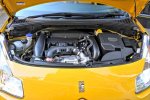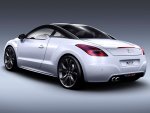It's just a service item at about 50,000 km for the PSA 1.6 engine. I don't know how long the 3 pot EB series engines will go for.
Ford, Mazda, Toyota, Audi, Merc, Hyundai, take your pick, are all using direct injection in current engines. The interval is shorter when there is oil vapour in the induction system, ie, turbo bearings.
Solvent sprays are used regularly to minimise the problem, Subaru, Nulon, etc. All these engines have oil vapour traps of varying efficiency.
Ford, Mazda, Toyota, Audi, Merc, Hyundai, take your pick, are all using direct injection in current engines. The interval is shorter when there is oil vapour in the induction system, ie, turbo bearings.
Solvent sprays are used regularly to minimise the problem, Subaru, Nulon, etc. All these engines have oil vapour traps of varying efficiency.







